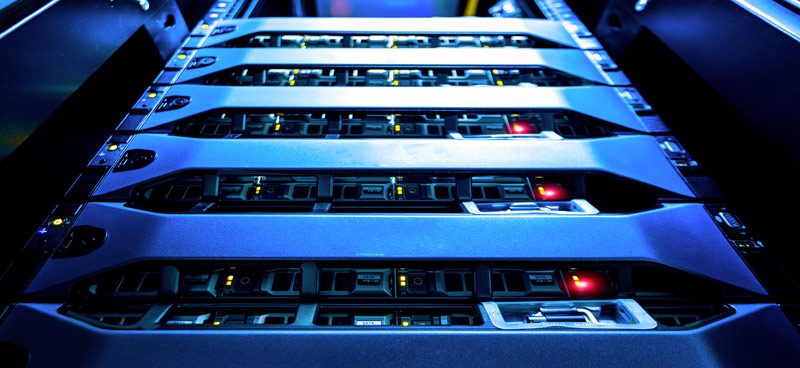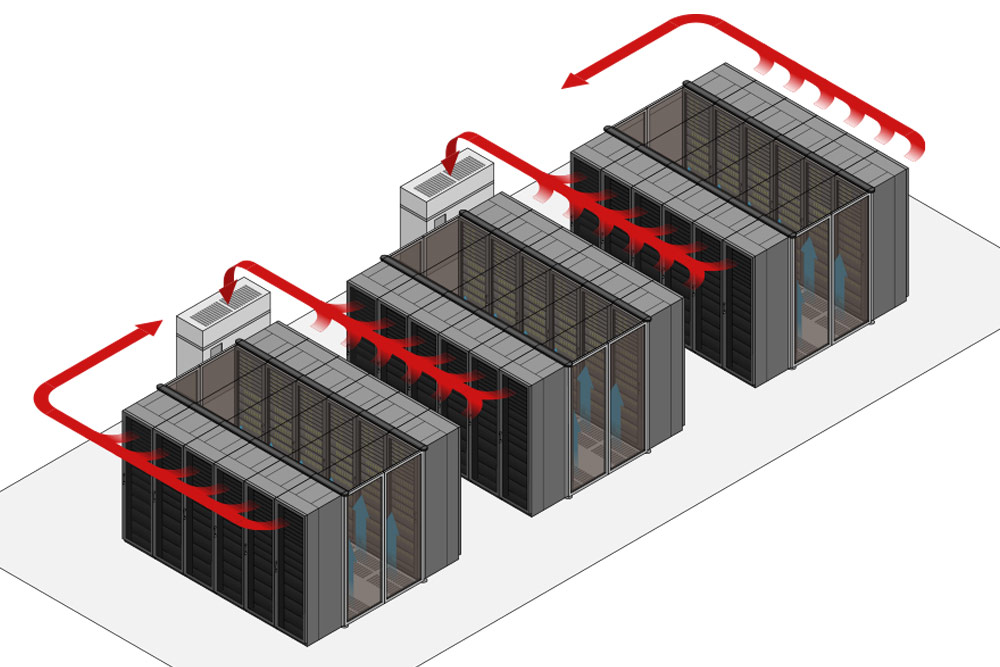Server clustering refers to a group of servers working together on one system to provide users with higher availability. These clusters are used to reduce downtime and outages by allowing another server to take over in an outage event. Here’s how it works. A group of servers are connected to a single system.
The moment one of these servers experiences a service outage, the workload is redistributed to another server before the client experiences any downtime. Clustered servers are generally used for applications with frequently updated data with file, print, database, and messaging servers ranking as the most commonly used clusters. Overall, clustering servers offer clients a higher level of availability, reliability, and scalability than any one server could possibly offer.
In a clustered server environment, each server is responsible for the ownership and management of each of its own devices and has a copy of the operating system (along with any applications or services) being used to run the other servers in the cluster. The servers in the cluster are programmed to work together to increase the protection of data and maintain the consistency of the cluster configuration over time.
Cluster Protection Against Failures and Outages
The primary rationale for server clusters is protection against outages and downtime. As mentioned above, clustered servers offer increased protection against an entire network going black during a power failure. Clustered servers protect against three primary types of outages.
We’ll explore these types of outages in detail in the following sections, but in short, server clustering helps provide protection against outages that occur as a result of software failure, outages that occur as a result of hardware failure, and outages that occur as a result of extraneous events acting upon the physical server site.
Application / Service Failure
Application/service failure events encompass any outages that occur as a result of critical errors involving software or services that are fundamental to the operation of the server or data center. These failures can be caused by a wide range of factors, many of which are largely unavoidable. Although most servers implement redundancy measures to prevent this type of failure, application/service failures are by nature difficult to anticipate and prepare for.
Due to the complex, dense nature of server monitoring data, it can be difficult for server admins to pinpoint and resolve potential issues before they cause an outage. While a vigilant, knowledgeable, and proactive server admin can identify and address these issues before they become problematic, no server admin will be able to provide comprehensive protection from this type of failure.
System / Hardware Failure
This type of outage occurs as the result of failures with the physical hardware on which the server is running. These outages can be caused by a wide variety of factors and can be caused and affected by virtually every different type of component crucial to the functionality of a server or data center.
While server components are steadily improving in terms of reliability and functionality, no components are immune to failure. This failure can occur as a result of overheating, poor optimization, or simply the component reaching the end of its product lifespan. Processors, physical memory, and hard disks are all among the components most susceptible to failure, due to their importance in keeping the server running.
Site Failure
Site failures are generally caused by events that occur outside of the data center environment. While in theory the events capable of causing a site failure are manyfold, the events most commonly to blame for site failures are natural disasters that cause widespread power outages, as well as those capable of damaging the hardware within the data center.
While some of the effects of natural disasters cannot be nullified by anything short of a judicious choice of locations, those caused by power outages and their related complications can be prepared for by using redundancy measures such as server clusters. For data centers located in areas prone to natural disasters, these redundancy measures are crucial.
Although it is possible to identify and resolve issues that could potentially lead to these three distinct types of failures, redundancy measures such as server clustering are the only way to ensure near-complete reliability. For data centers that require unfailing performance for every minute of every day of the year, server clustering is an excellent way to ensure exactly that.
The Three Types of Clustering Servers
There are three types of server clusters classified based on how the cluster system (referred to as a node) is connected to the device responsible for storing configuration data. The three types include a single (or standard) quorum cluster, a majority node set cluster, and a single node cluster and are reviewed in more detail below.
Single (or Standard) Quorum Cluster
The most commonly used, this cluster is comprised of multiple nodes with one or more cluster disk arrays that utilize a single connection device (called a bus). One server manages and owns each of the individual cluster disk arrays within the cluster. The titular quorum refers to the system used to determine whether or not each individual cluster is online and uncompromised.
Single quorum clusters are quite simple in practice. Each node has a “vote”, with which it communicates to the central bus that it is online and functional. As long as more than 50% of the nodes in a single quorum cluster are online, the cluster will remain up and running. If more than 50% of the nodes in the cluster are unresponsive, the cluster will cease to function until the issues with the individual nodes are addressed.
Majority Node Set Cluster
Like the above cluster, this model differs in that each node owns its own copy of the cluster’s configuration data, and this data is consistent across all nodes. This model works best for clusters with individual servers that are located in different geographic locations.
While the functionality of majority node set clusters shares similarities with that of single quorum clusters, the former differs in that it does not require a shared storage bus to function, as each node stores a duplicate of the quorum data locally. While this doesn’t entirely eliminate the utility of a shared bus, it allows for more flexibility when configuring remote servers.
Single Node Cluster
Most often used for testing purposes, this model contains a single node. Single node clusters are often used as a tool in the development and research of cluster applications, but their utility is heavily limited by their lack of failover. Due to the fact that they are composed of only a single node, the failure of a single node renders all cluster groups unavailable.
A customer service representative at a local data center or web hosting provider can explain the difference between each of the three models in more detail and assist in determining which is best for your business. Generally speaking, unless you have exceptional needs (or are located in multiple, geographically dispersed locations) the Standard Quorum Cluster is your best bet.
Why Cluster Your Servers?
The key to a protected IT infrastructure lies in redundancy. Creating a cluster of servers on a single network offers the ultimate redundancy and ensures that a single error doesn’t shut down your entire network, render your services inaccessible and cost your business vital revenue. Speak with a customer service representative at a local web-hosting provider to learn more about the benefits of clusters and how to get started.
Ready to See How Volico Data Center Can Help You?
Got questions? Want to talk specifics? That’s what we’re here for.
Have one of our friendly experts contact you to begin the conversation. Discover how Volico can help you with your Managed Hosting Services needs.
• Call: 888 865 4261
• Chat with a member of our team to discuss which solution best fits your needs.












